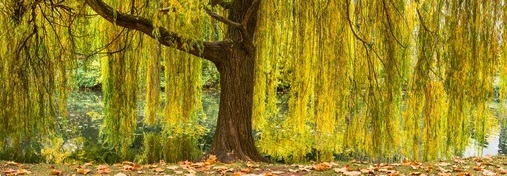
Trees are an essential part of the ecosystem, and they provide great scenery and shade for your backyard and home. However, trees do get sick, die, and will need to be removed in some cases. Determining the health of a tree can be a tricky process. These five tips will help you understand when a tree is unhealthy and what to do about it.
Leafless Branches
A bare branch here or there is usually nothing to worry about, but when there are large areas of the tree with bare branches, you have a problem. Although dying branches retain dead leaves in the winter instead of falling to the ground, it’s still a good idea to check the entire tree in the spring or summer when the leaves bud. If the branches are still bare when they should be full of leaves, it could mean there’s a problem with the root system or the trunk if the bare limbs are relegated to one side.
Root Damage
Digging up your tree to look at the roots is silly and unpractical, instead, check to see if the tree is leaning or sprouting small limbs at the base of the trunk. These are signs that the tree and root system are struggling.
To protect trees from root damage, always bury trees deep enough with good soil compaction. Also, try to keep excavation projects to a minimum to avoid exposing the roots to extreme heat or cold.
Mushrooms Or Fungus
Finding fungus on your tree denotes rot. The area around the fungus or inside the tree is probably rotting or dead. In the case of having a tree covered in fungus, it’s time to remove the dead tree and plant something else.
Check Limbs
When a deciduous tree’s health is in question, you may need to scratch off a bit of the bark with your finger nail to check the health of the tree. This is easiest to do on a small twig or limb that you can reach easily. If the area beneath the bark is green, the tree is healthy. If not, then the tree is either diseased or dead.
In some cases, certain trees have multiple trunks and can be difficult to diagnose. In these circumstances, you’ll have to check more than one area to distinguish the healthy areas from the dead sections.
Trunk
Trees in good health will be shedding the old bark for new, and they’ll absent of cracks and trunk separation. A cracked trunk, missing bark, or the retention of old bark is an indicator of trouble ahead.
If your tree is showing any of the above signs, then it’s a good idea to call a professional arborist for an assessment. In many cases, the tree can be nursed back to health in time, but in others, it’s best to have the dead tree removed. Leaving a dead tree on your property can be a safety concern for yourself and your neighbors seeing as the tree can fall and cause damage.
If you’re interested in tree trimming or stump removal try out Scottsdale Tree Trimmers. They are a full service cactus, tree, and stump removal company who have been around for years!














